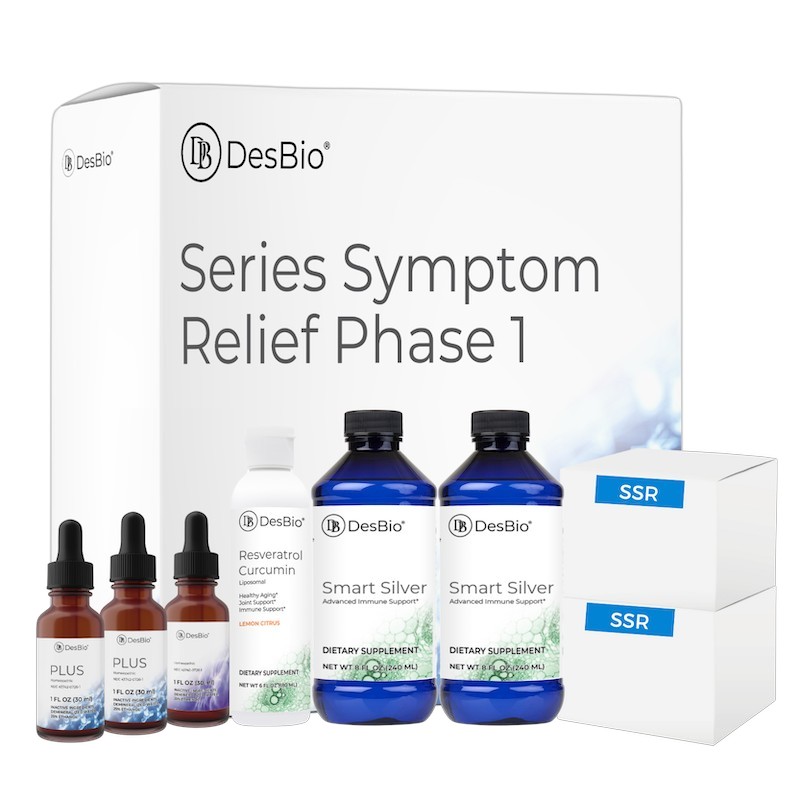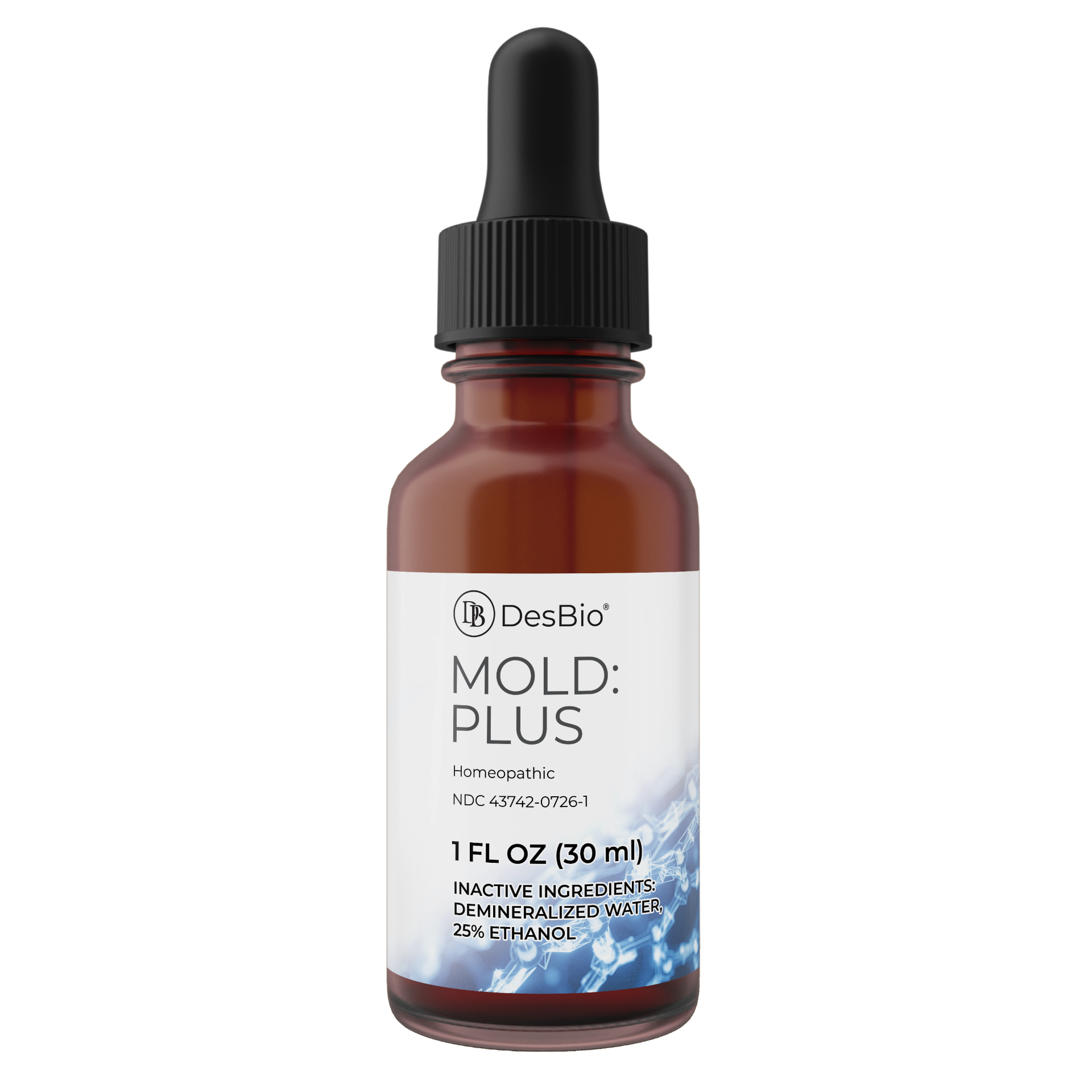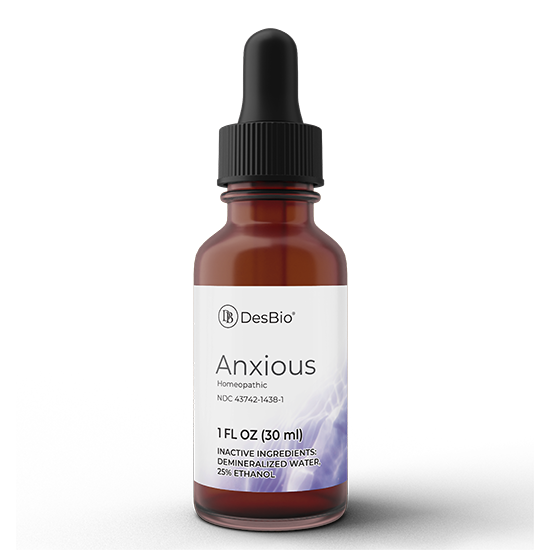MOLD Phase 1 Symptom Relief
Finally - a Mold Protocol That Supports the Body, Mind, and Immune System in One Complete Kit.
- Complete protocol supporting the body's response to three key mold species (Aspergillus, Penicillium, and Stachybotrys) with both organism and DNA energetic signatures.
- Flexible system that supports immune resilience, emotional terrain, and inflammatory balance in one integrated kit suitable for even highly sensitive individuals.
- Supports cognitive clarity and emotional balance in individuals experiencing mold-related brain fog, especially relevant with mold found in 70% of US homes.
In Stock
Prevalence and Impact of Mold Exposure
Understanding how pervasive mold exposure affects your patients' health is crucial for comprehensive treatment. The prevalence is staggering:
- 70% of homes in the U.S. have some form of mold present[1]
- Over 45 million buildings across the U.S. have unhealthy levels of mold[2]
- 21% of current asthma cases in the U.S. are attributable to dampness and mold exposure[4]
- Damp or moldy environments increase respiratory issues risk by 30–50%[10]
- Over 75,000 people are hospitalized annually for fungal infections, with at least 7,000 deaths[8]
→ Mold exposure is one of the most overlooked environmental factors impacting your patients' respiratory and systemic health.
What's Inside the Mold Phase 1 Kit?
📘 Download the SSR Practitioner Guidebook | 🌐 Learn more about the SSR Pathway
Homeopathic Indications: Mold SSR is for the temporary relief of symptoms related to mold exposure using Series Symptom Relief methodology.
- Aspergillus niger nosode + DNA
- Penicillium verrucosum nosode + DNA
- Stachybotrys chartarum (Black Mold) nosode + DNA
Why DNA matters: Each species is included in both whole organism nosode and DNA form, providing dual-layer energetic information and ensuring regulatory compliance for future formulation stability.
This kit includes 2 boxes to ensure adequate supply for the complete protocol duration.
Homeopathic Indications: A 20-ingredient homeopathic formula that provides broad-spectrum mold and terrain support. Mold Plus complements the targeted action of the Mold SSR by addressing multiple mold species, common co-exposures, and overall energetic balance.
- Addresses allergenic, pathogenic, and toxic mold effects beyond the three SSR species
- Supports the body's response to multiple mold species, even if not shown on lab results
- Includes home accords for deeper potency resonance and adaptability
- Assists the body in clearing common co-exposures like cockroach antigens found in household dust
Homeopathic Indications: A targeted emotional terrain formula designed to calm the nervous system during mold recovery. By reducing emotional reactivity, AnXious helps patients maintain compliance and tolerate detoxification without overwhelm.
- Helps with feelings of anxiety, irritability, and emotional volatility common in mold illness
- Supports focus and stability, improving adherence to protocols
- Helps regulate stress response for greater nervous system resilience
- Prepares patients emotionally for more intensive future detox phases
Description: A high-bioavailability blend of two potent antioxidants and anti-inflammatory compounds. This combination mitigates mycotoxin effects, helps the body to reduce oxidative stress, and promotes healthy inflammatory pathways during mold recovery.
- Lower inflammation to reduce symptom intensity and flare-ups
- Support detoxification pathways and cellular repair
- Protect against oxidative damage caused by mycotoxins
- Liposomal delivery ensures optimal absorption and clinical efficacy
Description: A colloidal silver solution providing broad-spectrum immune support. Smart Silver helps fortify defenses during mold recovery, when the immune system is often compromised.
- Supports the immune system in addressing microbial challenges
- Supports the body in reducing microbial burden to create a healthier internal terrain
- Complements detoxification by minimizing secondary infections
- Safe and well-tolerated adjunct for sensitive patients
Two 8oz bottles provide the full amount needed for the complete Phase 1 protocol.
📘 SSR Practitioner Guidebook - Your complete protocol resource!
📥 Download the SSR Guidebook PDF
Get instant access to detailed instructions for implementing the Mold Phase 1 Protocol
The guidebook includes:
- Step-by-step dosing guidelines for sensitive patients
- Comprehensive protocols and timing recommendations
- Troubleshooting tips for optimal results
- Patient tracking templates and progress monitoring tools
Also Consider:
- Mold:SSR Phase 2 (coming soon) - Continue your healing journey with Phase 2
- SSR Training Materials - Access additional educational resources
- OmniCleanse Detox Kit - Step 1 of the SSR Pathway: Detox & Drainage
The Hidden Impacts of Mold Exposure
Understanding how mold affects multiple body systems reveals why comprehensive support is essential for recovery:

Cognitive Impairment & Brain Inflammation
Inhaling mold triggers immune activation that spreads inflammatory responses to the brain, causing "brain fog," memory lapses, and difficulty concentrating.

Chronic Inflammation & Neuroimmune Disruption
Even non-toxic mold components activate immune pathways, causing prolonged inflammation affecting cognitive and emotional function.

Neurological & Psychiatric Symptoms
Mold exposure may contribute to emotional disorders and alter neurochemistry, including dopamine release, compounding brain-related symptoms over time.

Respiratory & Immune System Burden
Firmly linked to wheezing, congestion, sinusitis, and hypersensitivity pneumonitis, creating chronic immune activation and heightened allergy risk.

"Sick Building Syndrome" Effect
Occupants in moldy buildings experience headaches, fatigue, eye/nasal irritation, and general malaise—collectively known as Sick Building Syndrome.

Diagnostic & Testing Challenges
Self-reported symptoms and unvalidated tests create risk for misdiagnosis, while methodological flaws cloud understanding of mold's true impact.
These statements have not been evaluated by the Food and Drug Administration. This product is not intended to diagnose, treat, cure, or prevent any disease. Individual results may vary with dietary supplements and homeopathic remedies. For homeopathic products, statements are based upon traditional homeopathic practices.
MOLD Phase 1 Symptom Relief
Finally - a Mold Protocol That Supports the Body, Mind, and Immune System in One Complete Kit.
- Complete protocol supporting the body's response to three key mold species (Aspergillus, Penicillium, and Stachybotrys) with both organism and DNA energetic signatures.
- Flexible system that supports immune resilience, emotional terrain, and inflammatory balance in one integrated kit suitable for even highly sensitive individuals.
- Supports cognitive clarity and emotional balance in individuals experiencing mold-related brain fog, especially relevant with mold found in 70% of US homes.
In Stock
References
Supporting Research on Mold Exposure and Health Impacts










